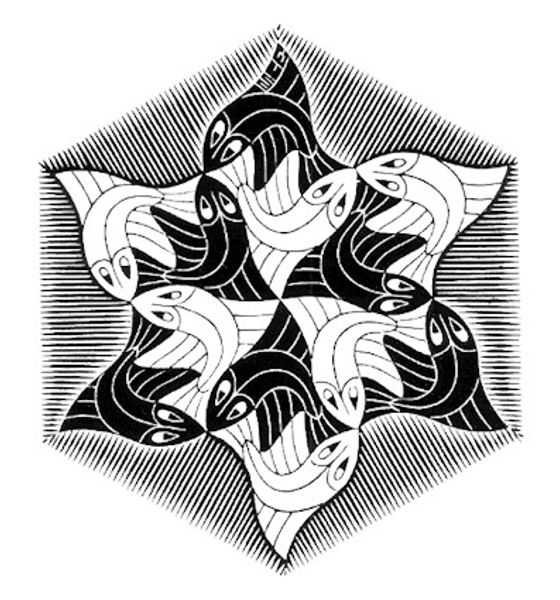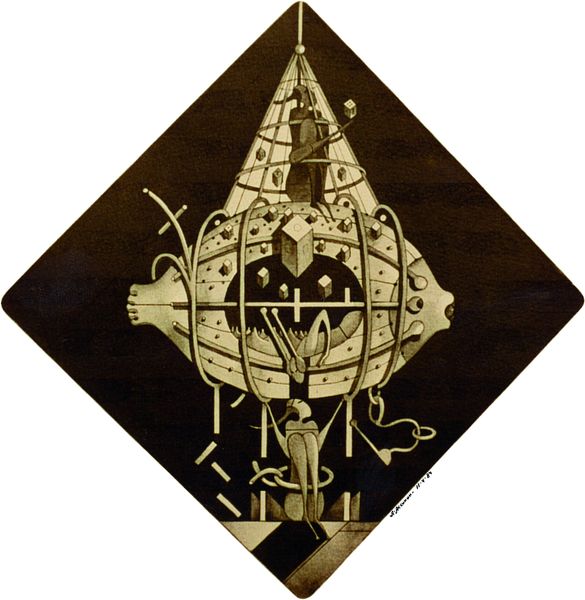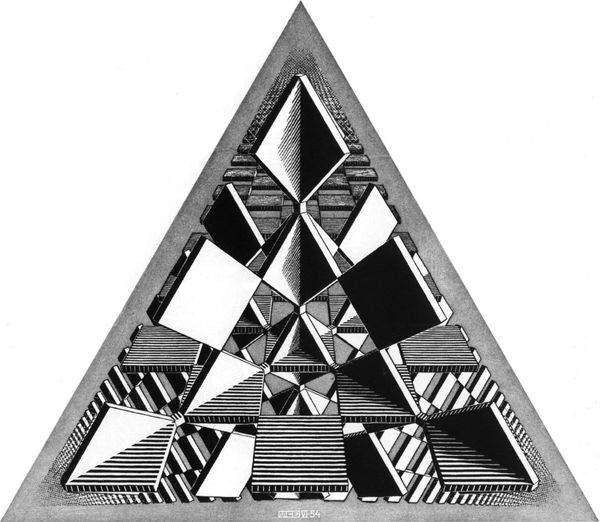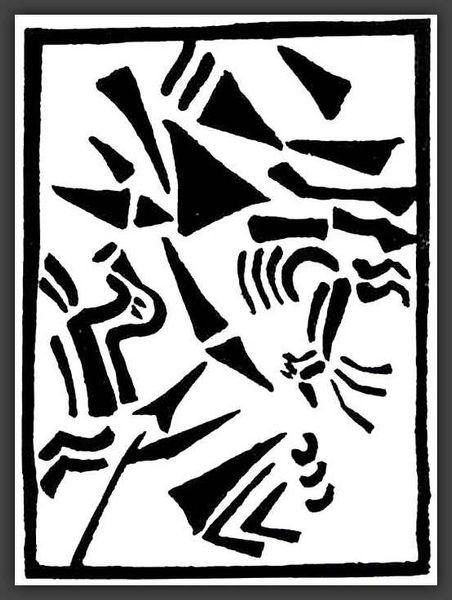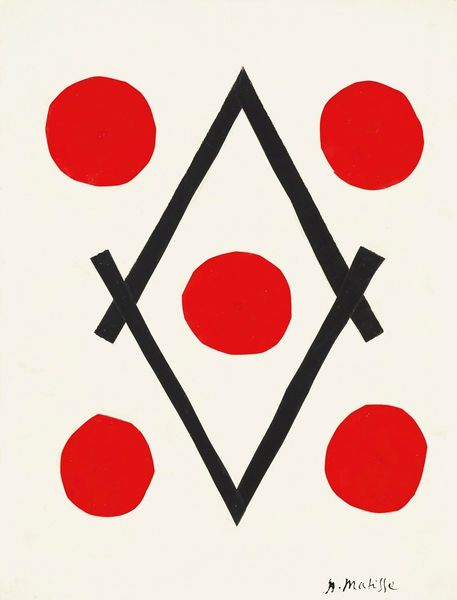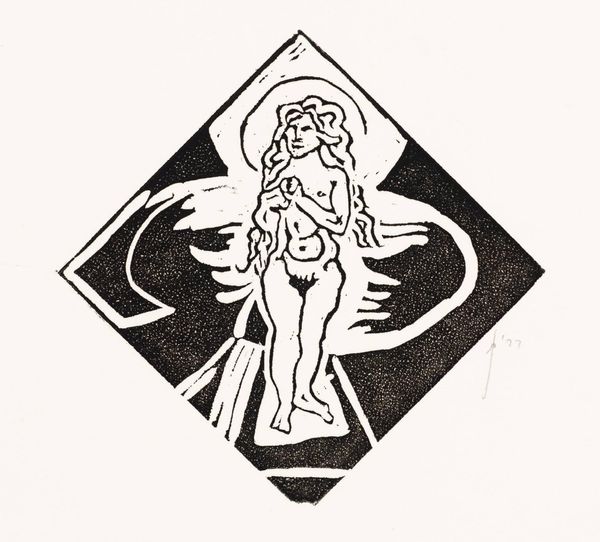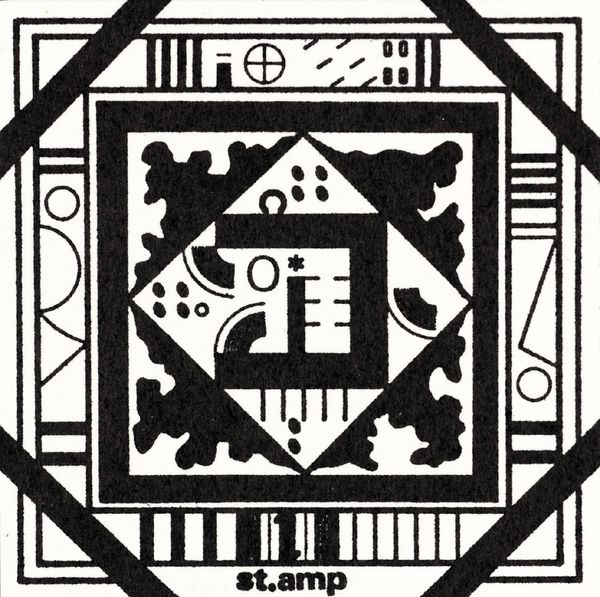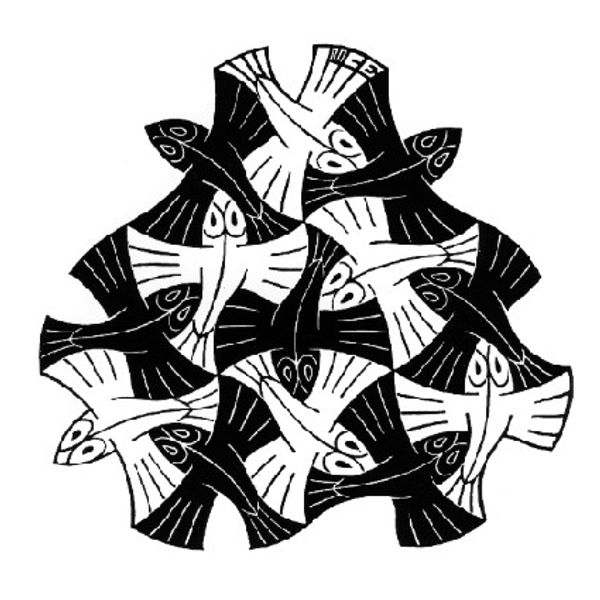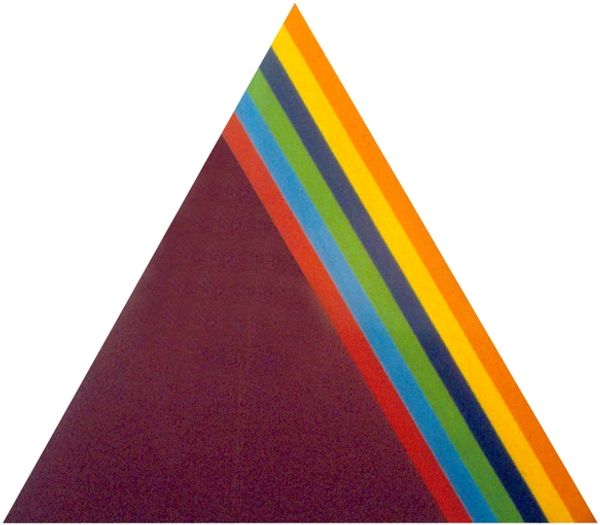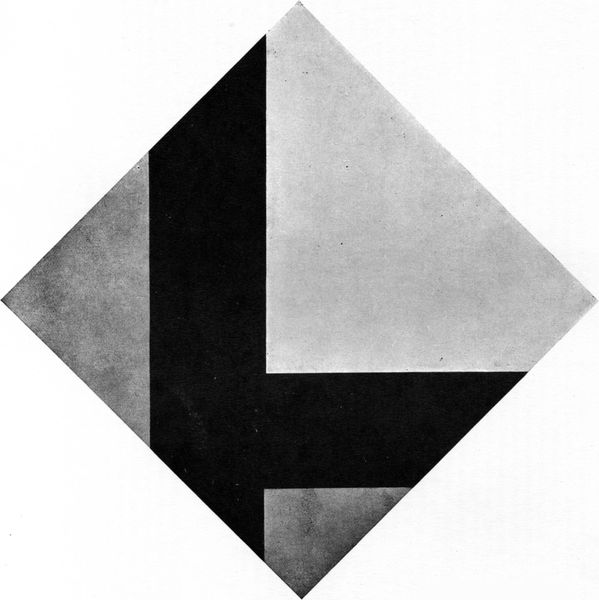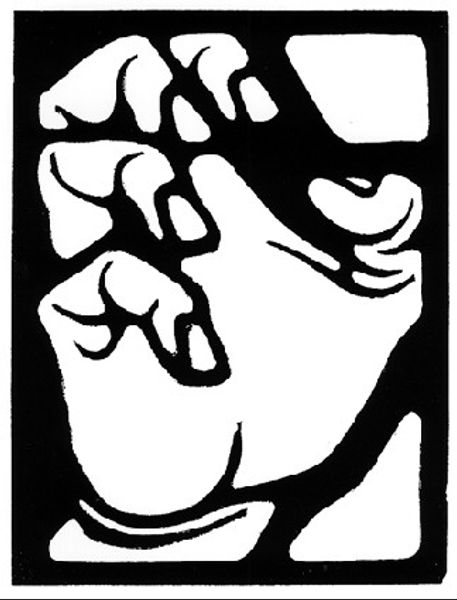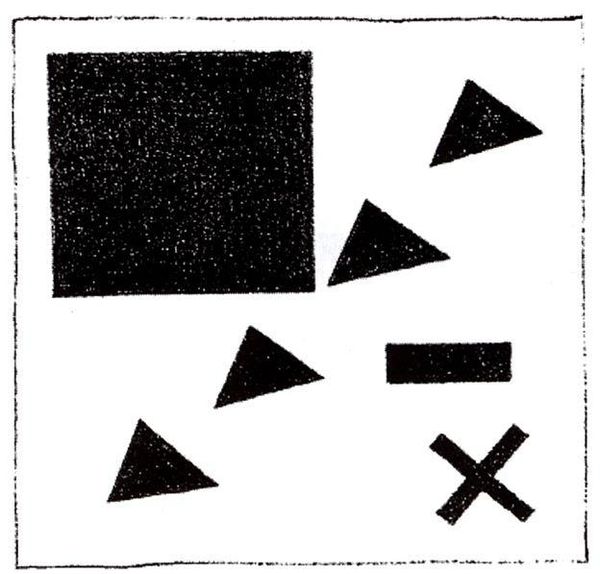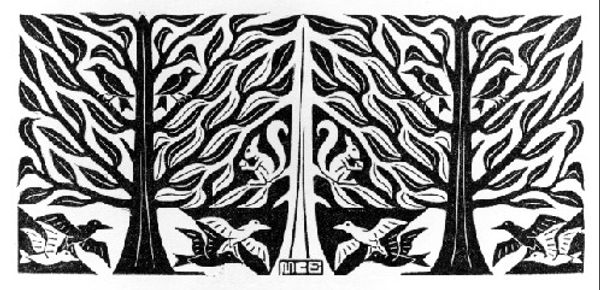
drawing, print
#
drawing
# print
#
pop art
#
figuration
#
female-nude
#
geometric
#
geometric-abstraction
#
abstraction
#
line
#
nude
Copyright: Public domain US
Curator: It presents a rather stark and geometric representation of a nude figure. I find its minimalist composition and stark contrast particularly compelling. Editor: Interesting. My initial reaction is a certain chilliness—a distancing effect, even though the subject is traditionally intimate. It feels quite intellectual. Let's delve into the artwork: this is "Seated Female Nude" by M.C. Escher, created around 1921. It appears to be a drawing or a print, rendered in black and white. Curator: The limited palette enhances the impact of Escher’s lines, forcing the viewer to consider their precise arrangement, how they define shape and volume with almost brutal efficiency. Semiotically, the simplification borders on abstraction, yet the female form is undeniably present. Editor: Exactly, but what about Escher's process here? It strikes me that even with this geometric abstraction, his mark-making would require a careful and considered physical engagement. Was this perhaps a study of the human form through the lens of emerging industrial processes—a pre-cursor to his later, more recognized tessellations and optical illusions? Curator: It’s intriguing to consider this as groundwork for his future optical explorations, because it speaks of transformation and challenging representation itself. It may not be what you think about what labor goes into this. He must follow geometry that is not exactly natural to begin with. Editor: It certainly disrupts the conventional notion of the nude as purely sensual object. This, in its almost diagrammatic presentation, suggests the female figure, yet presents us with ideas of space, shape, line as if constructed by and subject to mechanical forces. This is pre-digital art. Think of the manual labor required! Curator: Indeed! The lines are more than descriptive; they're generative. There are interesting implications in how line and abstraction transform classical themes, challenging not just representation, but expectations around figurative art in general. Editor: In the end, perhaps what moves me here is the potential for understanding how materials and processes influence meaning. The act of transforming the familiar into something unexpected through rigorous reduction has opened me to reconsider traditional craft versus high art categories. Curator: For me, this study highlights that beauty isn’t the final criteria for meaning but to experience what happens to vision when certain artistic conventions and formal constraints take hold.
Comments
No comments
Be the first to comment and join the conversation on the ultimate creative platform.
